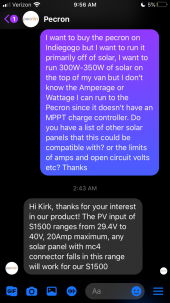MAGE
New Member
- Joined
- May 27, 2021
- Messages
- 73
They're extended video after use says that it only works for one person and if you're standing in front of it. The ice in this cooler from this video lasts for 2 days. I think this is going to work guys, my dad says he has some aluminum pipe I can use to try this out when my ICECO arrives. I'm very sad that I didn't get a chance to get the ICECO 3 in 1 for $299 on Indiegogo when I had the chance and now have to pay basically double the price.
Also in the video they said that their ducting that they used fills up with water as the ice melts so I want to make sure that mine doesn't get water in the duct (or the pipe) that I use.
I've settled on the type of fan that I'm going to use, it's going to be a low wattage AC fan. There simply aren't any good 12v fans that i have found that and quiet enough but this is the one that I'm going to get. Also I haven't found any quiet 12v marine inline fans that allow for continuous use like these do
Amazon.com: AC Infinity CLOUDLINE T4, Quiet 4” Inline Duct Fan with Temperature Humidity Controller - Ventilation Exhaust Fan for Heating Cooling Booster, Grow Tents, Hydroponics : Patio, Lawn & Garden
Amazon.com: AC Infinity CLOUDLINE T4, Quiet 4” Inline Duct Fan with Temperature Humidity Controller - Ventilation Exhaust Fan for Heating Cooling Booster, Grow Tents, Hydroponics : Patio, Lawn & Garden
www.amazon.com
It has variable temperature control, which seems pretty cool. No pun intended.
Can't wait to order this stuff and try it out!




